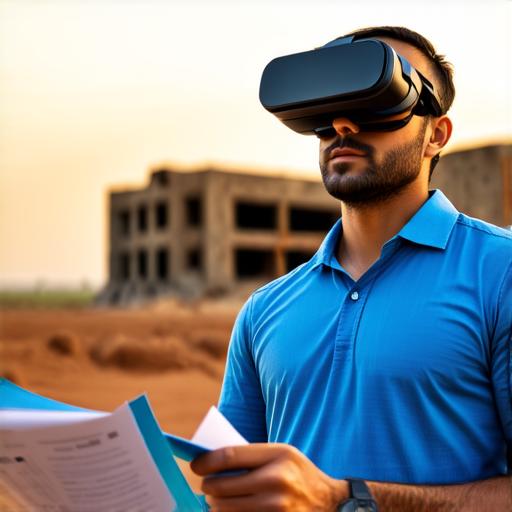
How can the construction industry utilize virtual reality?
Virtual reality (VR) technology has been around for several years now, but its potential in the construction industry is just beginning to be explored. With VR, architects and builders can visualize projects in 3D, allowing them to make more informed decisions and reduce construction costs.
One of the biggest advantages of using VR in construction is that it allows architects and builders to visualize a project in 3D, giving them a better understanding of what the final product will look like. This helps them to identify potential problems early on in the design process, saving time and money in the long run.
For example, a company called VR Buildings has been using VR technology to create virtual models of buildings before they are built. By doing this, architects can see how the building will look from all angles, ensuring that it meets their design requirements. This process also helps builders to better understand how the building will be constructed, reducing the number of mistakes and rework needed on site.
Another way VR is being used in construction is for training purposes. With VR, construction workers can practice their skills in a safe environment, allowing them to learn new techniques without risking injury or damaging equipment. This not only improves safety on site but also helps to reduce costs by minimizing the number of accidents and rework needed.
One example of this is a company called Bechtel, which has been using VR technology to train workers on how to operate complex machinery. By simulating real-life scenarios in VR, workers can practice their skills without risking injury or damaging equipment. This not only improves safety but also helps to reduce costs by minimizing the need for costly repairs and rework.
In addition to visualization and training, VR is also being used for project management. With VR, architects and builders can visualize a project in 3D, allowing them to better understand how different elements of the project fit together. This helps them to identify potential problems early on in the design process, saving time and money in the long run.
One example of this is a company called HoloDeck, which has been using VR technology for project management. By creating virtual models of projects, architects can see how different elements of the project fit together, allowing them to make more informed decisions and reduce construction costs.
Another advantage of using VR in construction is that it allows for greater collaboration between architects, builders, and other stakeholders. With VR, everyone can see the same virtual model of a project, making communication and collaboration much easier. This not only improves efficiency but also helps to reduce errors and rework needed on site.
One example of this is a company called Autodesk, which has been using VR technology for collaboration. By creating virtual models of projects, architects, builders, and other stakeholders can work together in real-time, reducing the need for costly rework and improving efficiency.
In conclusion, virtual reality technology is revolutionizing the construction industry by allowing architects and builders to visualize projects in 3D, train workers in a safe environment, manage projects more efficiently, and collaborate with stakeholders more easily. As VR technology continues to evolve, we can expect to see even more innovative uses of VR in the construction industry.
FAQs:
Q: How does virtual reality work?
A: Virtual reality technology works by creating a 3D environment that simulates the real world. Users wear a headset or other device that tracks their movements and displays the virtual environment in real-time.
Q: What are some common uses of virtual reality in construction?
A: Some common uses of virtual reality in construction include visualizing projects in 3D, training workers in a safe environment, managing projects more efficiently, and collaborating with stakeholders more easily.
Q: How can virtual reality help reduce construction costs?
A: Virtual reality can help reduce construction costs by allowing architects and builders to identify potential problems early on in the design process, reducing the need for costly rework and improving efficiency. It can also help reduce safety risks on site and minimize the number of accidents.



